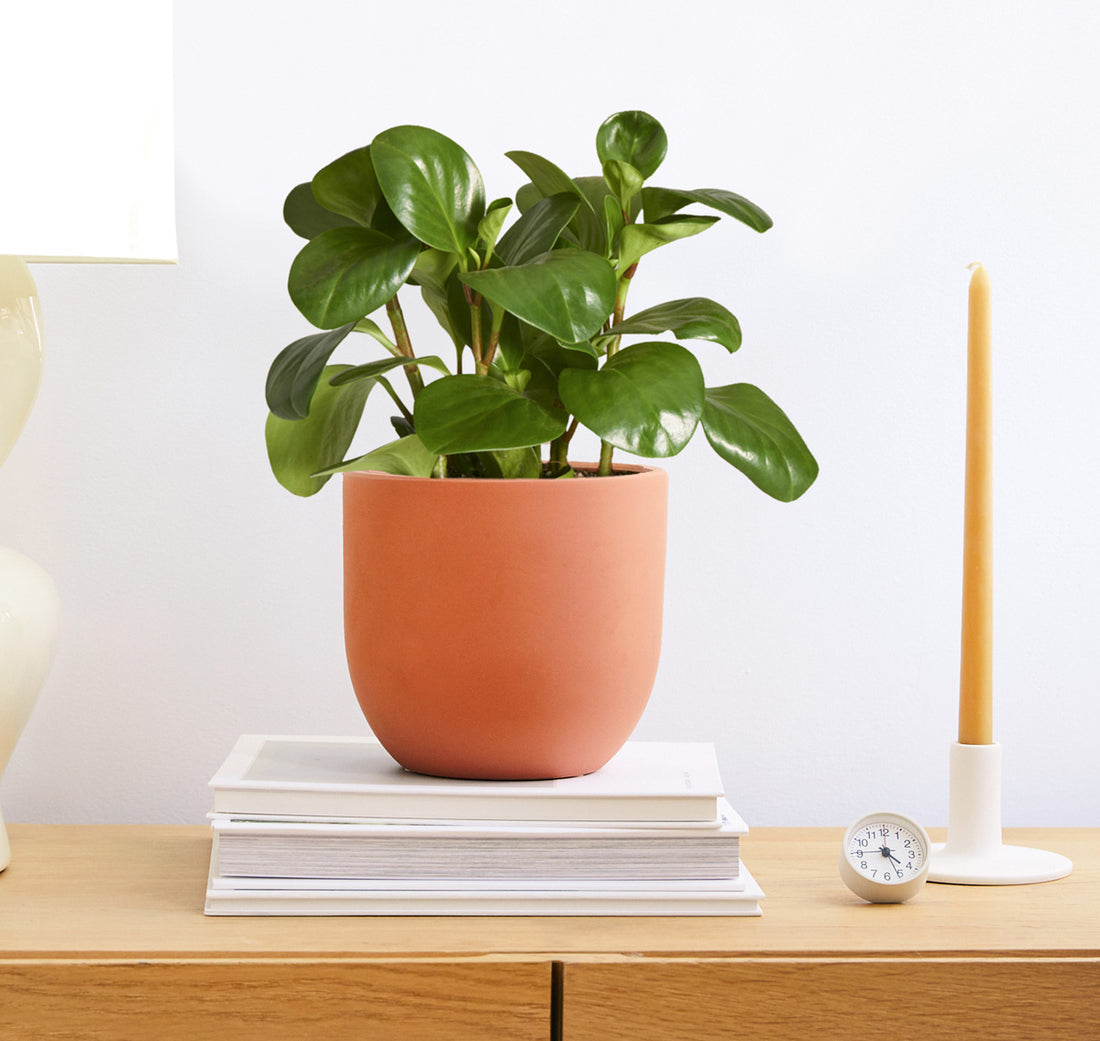
Plants 101
All About Peperomia Plants and How to Care for Them
The Peperomia genus is home to over a thousand species of diverse plants—including popular houseplants such as the Watermelon Peperomia, Ripple Peperomia, Baby Rubber Plant, and more.

2022 is the Year is the Peperomia. The genus, in the peppercorn family Piperaceae, is home to over a thousand species of diverse plants—including popular houseplants such as the Watermelon Peperomia, Ripple Peperomia, Baby Rubber Plant, and more.
The family Piperaceae belongs to an ancient lineage of flowering plants known as Magnoliids. These plants are mostly tropical, and are the source of many of the essential oils and botanical oddities that we use today. Avocados, bay laurel, black pepper, cinnamon, magnolias, and nutmeg are all Magnoliids. In the clade Magnoliids, sits the order Piperales, which includes the family Piperaceae, home to the genus Peperomia.
Unlike plants Peperomia are distantly-related to, they are grown not for food purposes, but for ornamental purposes. Their flower spikes lack a perianth, or petals and sepals, and instead are borne on a spike. The spike, or inflorescence, is an easy way to identify a blooming plant is from the Piperaceae. It might not be the most attractive flower, however, Peperomia plants are grown for their beautiful foliage, not their blooms. They are semi-succulent, adaptable, visual-appealing, and pet-friendly—all characteristics that make for suitable houseplants.
Peperomia have the ability to be propagated from any part of the plant, except for the roots. Stem, or even leaf, cuttings can root if given proper conditions, which makes it quite valuable in the horticultural industry. This ability is more common in more ancient lineages, but randomly; and whether or not it is an ancient characteristic, or just an evolutionary quirk remains to be known. Being relatively easy to grow, species of Peperomia have been sold as houseplants since the 1930s.
[product-card-1]
How much sunlight does a peperomia need?
Most varieties of Peperomia plants prefer medium to bright indirect light, but can tolerate low, indirect light. Peperomia plants are not suited for intense, direct sun.
How often should you water a peperomia?
Water every 1-2 weeks, allowing the potting soil to dry out between waterings. Expect to water more often when your cactus is in brighter light and less often in lower light.
Native to the tropics, some of the less-succulent varieties of Peperomia can benefit from higher humidity. However, be mindful not to over water them. Leaves that yellow then drop, combined with moist potting mix, can be a sign of overwatering.
What temperature does a peperomia prefer?
Like most common houseplants, Peperomia plants prefer an average indoor temperature of 65°F to 75°F. If you’re comfortable in your space, your houseplants probably are, too. Remember to keep plants away from heating and cooling systems, or open doors and windows, that can cause temperature fluctuations and drafts.
How big does a peperomia get?
Plants from the Peperomia genus are popular houseplants because they are petite and compact. Indoors, most Peperomia plants will stay fairly small, never surpassing two feet tall.
Are peperomia easy to care for?
Peperomia are are generally easy houseplants to grow. They are resistant to most plant pests, however, treat pests as soon as they appear with weekly sprays of neem oil or an insecticide, and regular wipe-downs of the infected plant. Other common plant problems you can look out for are:
SYMPTOM: Dull, fading leaves
CAUSE: Too much direct sun
SYMPTOM: Wilting, with dry potting mix
CAUSE: Underwatered
SYMPTOM: Wilting, plus leaf loss
CAUSE: Overwatered
SYMPTOM: Browning of leaf edges or tips
CAUSE: Cold drafts
Are peperomia safe to keep around pets?
The Peperomia family is pet-friendly! Peperomia are non-toxic, making them safe to keep around your furry friends. However, the best practice is always to keep new houseplants out of reach of small children and curious pets just in case.

Words By The Sill
Empowering all people to be plant people—a collection of articles from The Sill's team of plant experts across a variety of plant care topics to inspire confidence in the next generation of plant parents. Welcome to Plant Parenthood™.
Do Some Plant Shopping